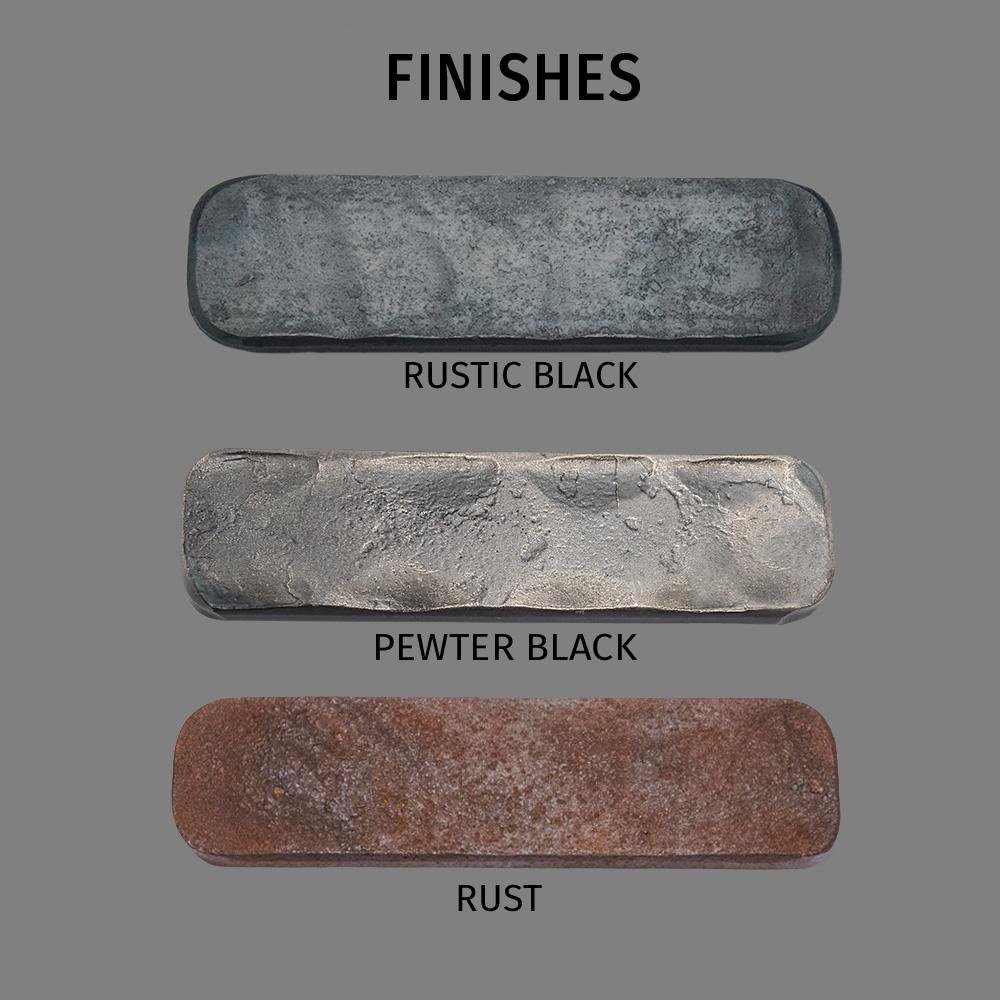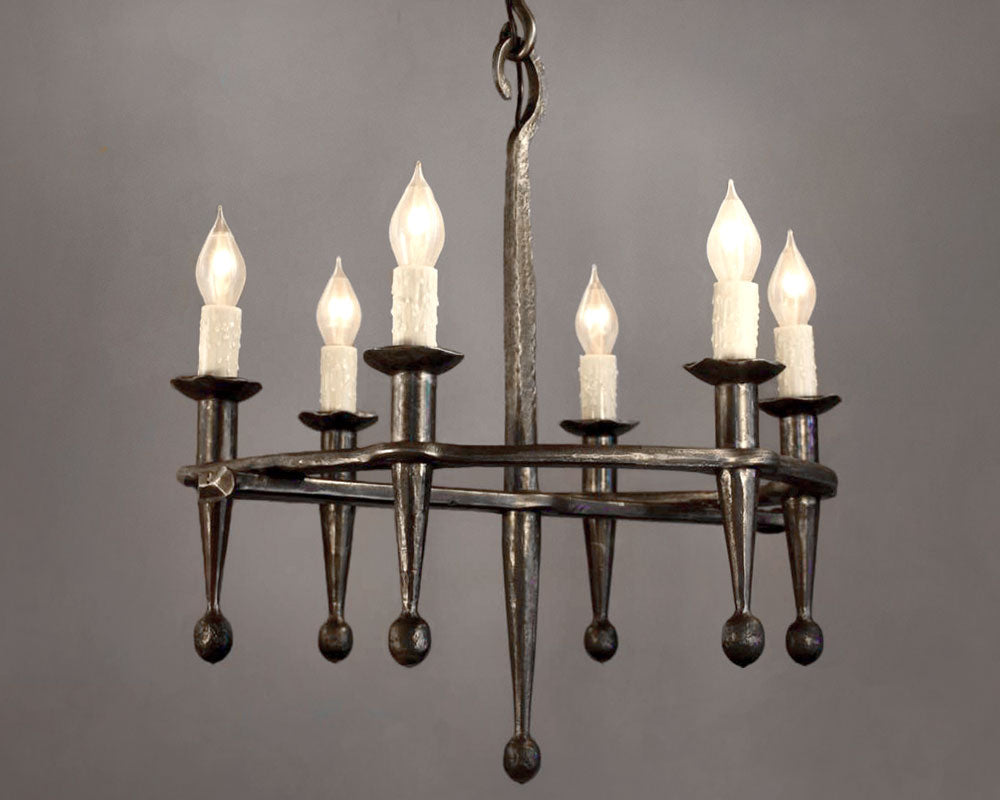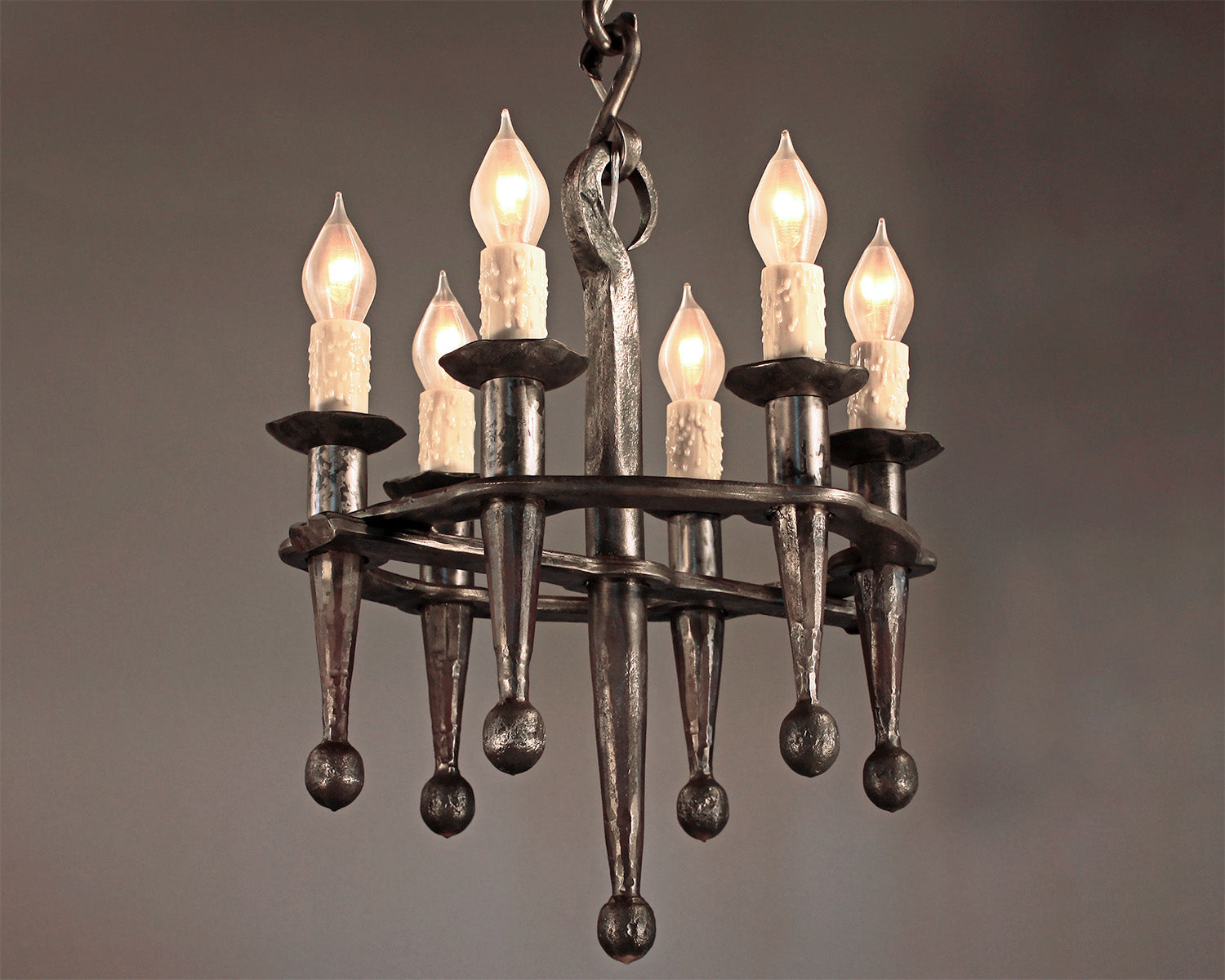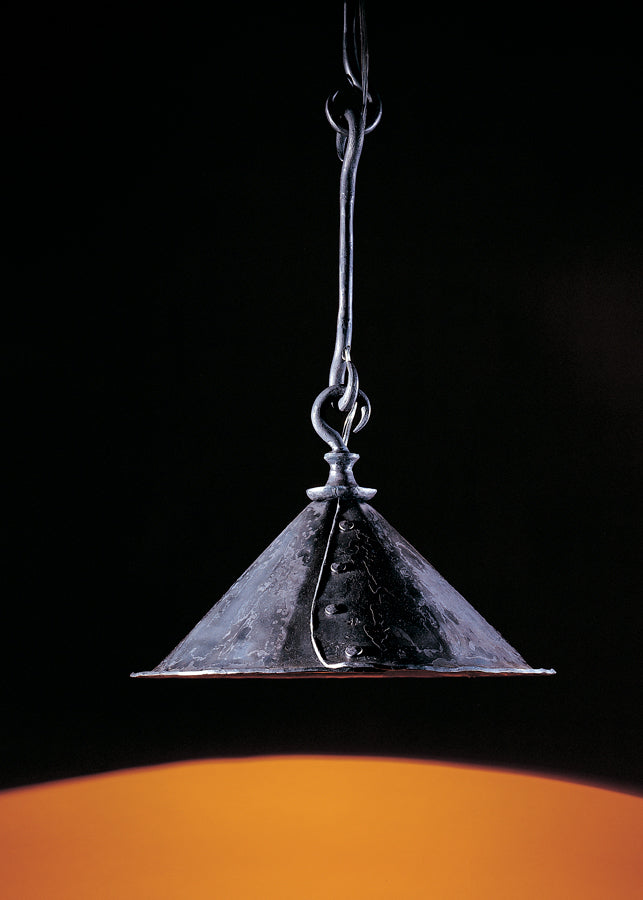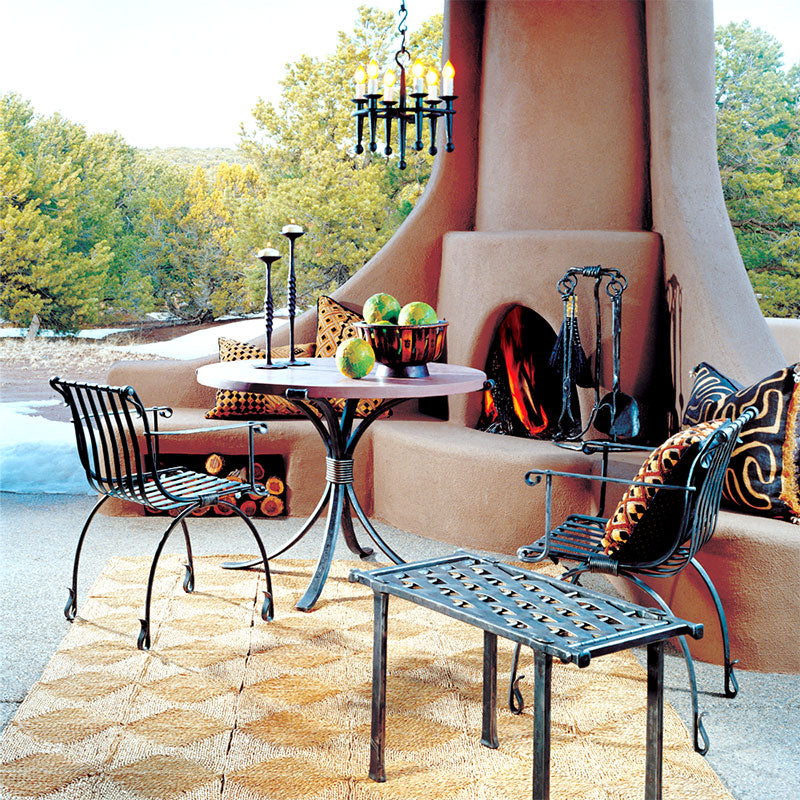History of Wrought Iron Lighting
A journey through the timeless craft
Wrought iron has been a cornerstone of architectural design for centuries, and one of its most captivating uses is in lighting fixtures. From medieval torch holders to the elegant chandeliers of European courts, wrought iron lighting has evolved while maintaining its artisanal allure and durability. Today, hand-forged wrought iron lighting is both a nod to history and a modern choice for eco-conscious, design-savvy homeowners. But to fully appreciate its enduring presence, we must look back at its rich history.

Photo by Jonathan Kemper on Unsplash.
The Origins of Wrought Iron
Wrought iron, known for its malleability and strength, has been used in toolmaking and construction for over 2,000 years. The term “wrought” comes from the Old English word wyrcean, meaning "to work" or "to forge." Unlike cast iron, which is poured into molds, wrought iron is heated and manually shaped by skilled blacksmiths, giving it a distinctive, handcrafted appearance.
The early use of wrought iron dates back to the Roman Empire, where it was used primarily for functional items such as gates, weapons, and tools. However, it wasn’t long before artisans began to see the decorative potential of this material, especially for lighting. With the spread of ironworking techniques across Europe, wrought iron became a sought-after material for both practical and decorative purposes.
Medieval Wrought Iron Lighting: From Utility to Craft
During the Middle Ages, wrought iron lighting took the form of basic yet functional iron torch holders and wall sconces. Castles, cathedrals, and monasteries—often dark and imposing—required lighting fixtures that were both durable and easy to maintain. Wrought iron was perfect for the job, as its strength allowed for long-lasting fixtures, while its pliability enabled blacksmiths to create custom designs.
Torch holders and lanterns were often designed to be utilitarian, with little thought given to decoration. However, as ironworking techniques advanced, so did the aesthetic possibilities of wrought iron. By the late medieval period, blacksmiths were using wrought iron chandeliers to adorn grand halls, combining function with ornate designs that featured scrolls, floral patterns, and intricate armatures.

The Renaissance and Baroque Periods: Wrought Iron Lighting as Art
The Renaissance (14th–17th century) and Baroque periods saw a blossoming of the decorative arts, and wrought iron lighting was no exception. As art and craftsmanship flourished, blacksmiths began to develop more sophisticated techniques, producing elaborate chandeliers, candelabras, and sconces that were as much works of art as they were practical lighting solutions.

In the grand palaces and manors of Europe, wrought iron chandeliers became a symbol of wealth and status. These intricate fixtures, often hung in the great halls of noble homes, featured multiple arms adorned with candles, creating dramatic lighting effects. The combination of candlelight and the dark, rich finish of wrought iron gave these chandeliers a timeless elegance, a quality that continues to define them today.

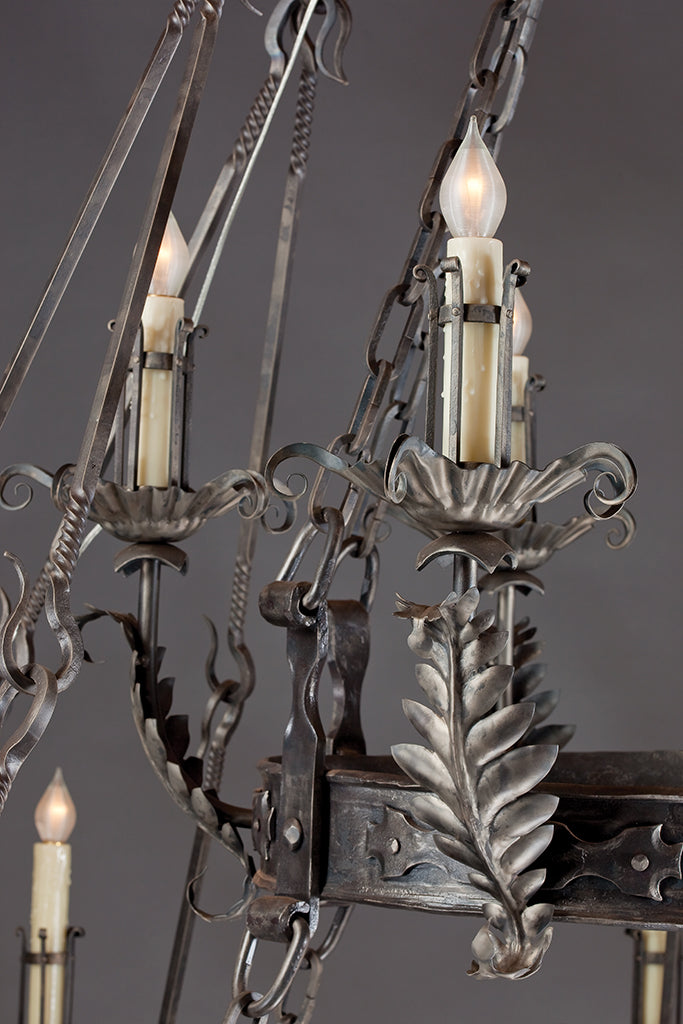
Custom wrought iron and repoussé chandelier by Christopher Thomson Ironworks.
The 20th Century and Beyond: Revival and Modern Applications
The 20th century saw a resurgence in the popularity of wrought iron lighting, particularly as part of the Gothic Revival and later the Rustic and Tuscan design trends. Homeowners and designers alike began to value the craftsmanship, durability, and aesthetic appeal of wrought iron, especially in architectural lighting. The material’s ability to be shaped into intricate, custom designs made it ideal for both traditional and contemporary homes.
Today, wrought iron is still hand-forged by artisans, with blacksmiths like Christopher Thomson continuing the legacy of this ancient craft. In addition to its timeless beauty, his wrought iron lighting is crafted with environmentally friendly practices, including the use of recycled steel and Dark Sky compliance practices to reduce light pollution.
Why Wrought Iron Lighting Endures
The endurance of wrought iron in lighting design can be attributed to several factors:
- Durability: Wrought iron is incredibly strong, making it ideal for both indoor and outdoor lighting fixtures that stand the test of time.
- Timeless Aesthetic: Whether in a medieval castle or a modern home, wrought iron’s dark, rustic finish and intricate designs have always been associated with elegance and sophistication.
- Artisan Craftsmanship: Each wrought iron lighting fixture tells a story. Hand-forged by skilled blacksmiths, these pieces are truly one-of-a-kind, reflecting the centuries-old tradition of blacksmithing.
Conclusion: A Light That Endures
From medieval torch holders to modern pendant lights, wrought iron lighting has maintained its place as a staple of both function and beauty. Today, as people seek out sustainable, handcrafted products, hand-forged wrought iron lighting continues to appeal to those who appreciate the artistry and tradition behind each piece.
At Christopher Thomson Ironworks, we honor this history by creating wrought iron light fixtures that blend timeless craftsmanship with transitional and contemporary design. Each piece is a tribute to the centuries-old tradition of blacksmithing, ensuring that your home is not only beautifully lit but also connected to the rich heritage of wrought iron lighting.
Read More Articles
Unique Handmade Holiday Gifts From New Mexico
This holiday season, many people are choosing meaningful, handmade gifts over mass-produced rush shopping. In this post, we share our curated collection of hand-forged sculptures...
Forged In Sound - Artist Reception at Owen Contemporary
Forged in Sound at Owen Contemporary showcases Christopher Thomson’s latest forged steel sculptures paired with original flute compositions—creating a powerful conversation between visual art and...
Benefits of Dark Sky Friendly Lighting
Illuminate your home with Dark Sky-friendly outdoor lighting from Christopher Thomson Ironworks. Our hand-forged wrought iron sconces, lanterns, and pendants offer both elegance and eco-conscious...
History of Wrought Iron Lighting
Discover the centuries-old craft of wrought iron lighting, from historic castles to contemporary homes. Learn how these hand-forged pieces evolved and remain timeless.
Inn of the Anasazi
At the Inn of the Anasazi in Santa Fe, our work is on display, helping to create an inviting atmosphere that complements the hotel's Southwestern style.
Patio Furniture - Why Choose Wrought Iron
Learn why wrought iron patio furniture is the top choice for outdoor living spaces. Explore its blend of beauty, strength, and long-lasting durability.







